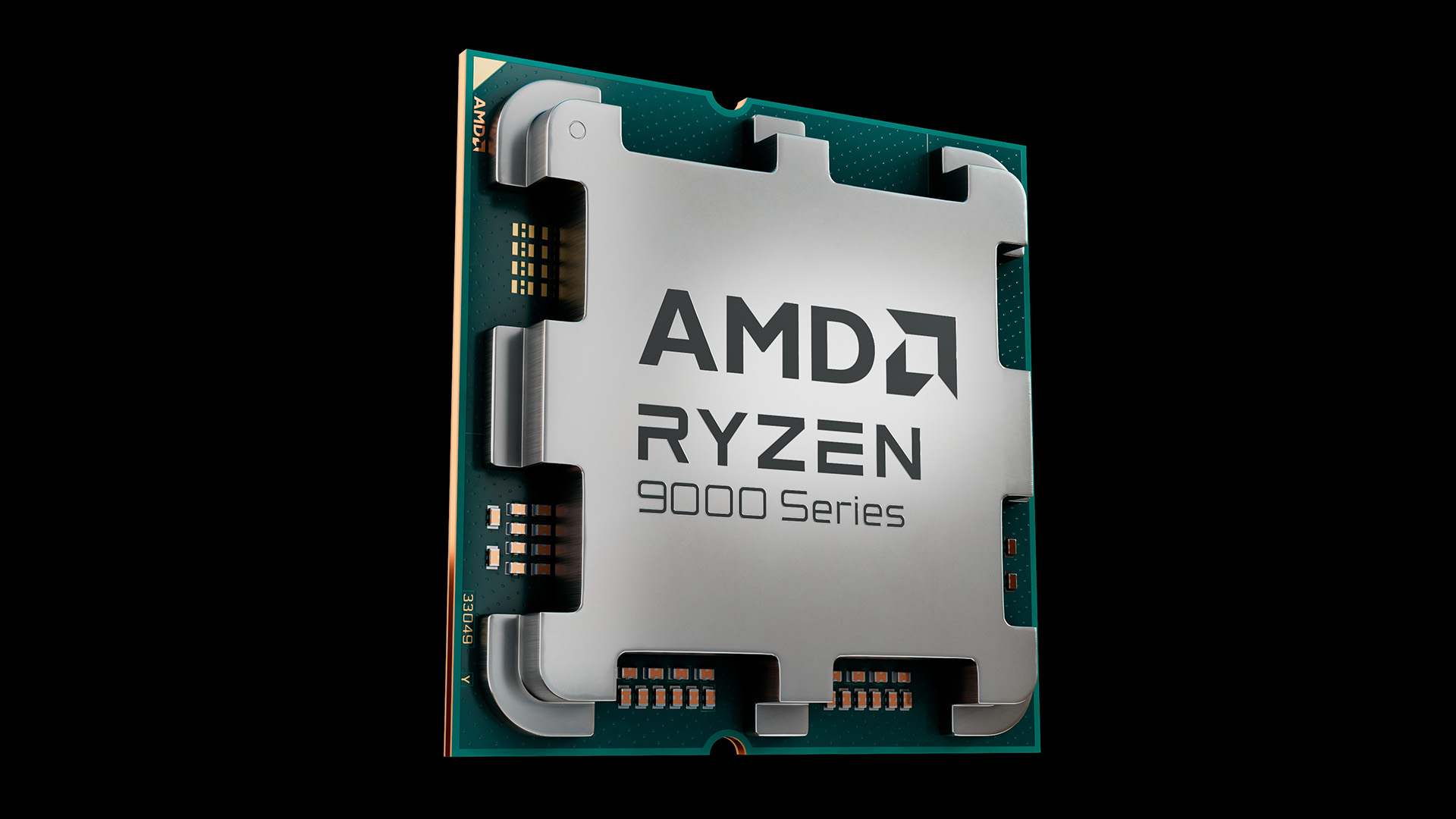AMD planning monstrous dual-cache Ryzen 9 9950X3D2 with 192MB of game-boosting L3 cache, according to leak

It is no secret that AMD is quietly preparing to refresh its Granite Ridge family of desktop processors with several new models to solidify its market position, particularly among OEMs. Chi11edog on Tuesday revealed specifications of range-topping Ryzen 9000-series 'Granite Ridge Refresh' processors, and if they are accurate, then the new CPUs will be considerably more cache-heavy than predecessors.
If the information from Chi11edog is to be believed, then the new lineup will be headed by the Ryzen 9 9950X3D2: a 16-core processor clocked at 4.30 GHz – 5.60 GHz and equipped with a whopping 192 MB of L3 cache (up from 128MB in case of the 9950X3D) as it will come with two 3D V-Cache chiplets (one chiplet per core chiplet die). The default thermal design power (TDP) of the CPU will reportedly increase to 200W from 170W on current models, but the processor's performance increase could be well worth it in applications that demand high memory bandwidth, such as games.
For gamers who do not want to invest a small fortune in a top-of-the-line CPU, AMD will purportedly offer the Ryzen 7 9850X3D. This eight-core CPU will run at 4.70 GHz – 5.60 GHz and feature 96 MB of L3 Cache using internal SRAM and an external 3D V-Cache chiplet. Since the CPU will differ from the existing Ryzen 7 9850X3D with a higher turbo clock, it will retain a default TDP of 120W.
Since the information comes from an unofficial source, it should be taken with a grain of salt. Nonetheless, it makes great sense for AMD to refresh its Ryzen 9000-series 'Granite Ridge' lineup based on the Zen 5 microarchitecture, both from a technology and marketing strategies point of view.
AMD's Zen 5 CCDs have been made for well over a year on a proven TSMC N4 fabrication technology; their yields are probably very good, so the company can safely boost clock speeds, raise power limits, and stack more cache without spending too much on redesign. Also, the new Ryzen 9000-series processors will keep using the AM5 platform, enabling drop-in upgrades for existing users, higher performance for those who are in the market for a new desktop, and new models for PC makers who tend to like selling something different from what they did a year before.
In short, the launch of Granit Ridge Refresh enables AMD to squeeze extra performance from the existing architecture without major investments or requiring partners to release new motherboards (still, the Ryzen 9 9950X3D2 will likely require higher-end platforms anyway). The refresh also acts as a preemptive strike against Intel's upcoming releases, keeping AMD visible in enthusiast and gaming segments that demand every extra bit of performance.

Follow Tom's Hardware on Google News, or add us as a preferred source, to get our latest news, analysis, & reviews in your feeds.
Get Tom's Hardware's best news and in-depth reviews, straight to your inbox.

Anton Shilov is a contributing writer at Tom’s Hardware. Over the past couple of decades, he has covered everything from CPUs and GPUs to supercomputers and from modern process technologies and latest fab tools to high-tech industry trends.
-
ekio Only to be beaten in single thread perf by an iPad CPU lol.Reply
Drop the x86 bloat and focus on risc type ISAs… -
Techsavi01 I'll definitely be buying that when it's released! Just built myself an AM5 system with a 7800X3D but doubling that precious L3 to almost 200MB is irresistible lol. And no dude, an iPad CPU doesn't beat AMD's single core performance, funny you.Reply -
LabRat 891 I know the 9900Xs and 9850Xs see increased memory bandwidth from both CCDs interfacing with the IOD. I'm wondering if that'll be any benefit in a dual vCache CCD CPU? Probably not, since X3D is already less-affected by RAM performance.Reply
Still, curious.
I know I'm not the only one that was on the edge of buying a 9800X3D, due to no-better option being available. I'm 100% holding off for this, now. -
Notton Reply
Do you play games on your iOS/macOS device that benefit from said single thread performance?ekio said:Only to be beaten in single thread perf by an iPad CPU lol.
Drop the x86 bloat and focus on risc type ISAs… -
hotaru251 Reply
little is now single threaded as its limited.ekio said:Only to be beaten in single thread perf by an iPad CPU lol.
Most stuff is made for multithread as scales better.
and arguably the reason apple's does well in SThread is also alot of the OS. Windows by design is not as pretty udner the hood and that impacts the hardware. (also why linux usually does betetr than windows becasue its cleaner than windows) -
MosephV Reply
The 9850X3D sounds interesting (single CCD). The 9950X3D2 sounds neat, but I wonder if it will be hurt by latency if/when a core in CCD0 needs to access the cache on CCD1. This could cause more harm than benefit. At least with gaming.Techsavi01 said:I'll definitely be buying that when it's released! Just built myself an AM5 system with a 7800X3D but doubling that precious L3 to almost 200MB is irresistible lol. And no dude, an iPad CPU doesn't beat AMD's single core performance, funny you. -
TheOtherOne I am gonna start taking care of my left arm, leg and one of the kidneys. Gonna feed them nice and keep them fat and healthy!Reply
When time comes, how else am I gonna buy this new hardware without selling above mentioned one of each? 😑 -
BFG-9000 Logically once you run out of cache, CPU performance will be limited to the speed of the memory. So more cache is great for games because it makes running out much less likely, so the CPU will run at its full speed more often.Reply
The M5 has 153GB/s memory bandwidth which minimizes the need for cache in kind of the same brute-force way Xeon or EPYC platforms do in order to improve performance in scientific applications that are both limited primarily by memory bandwidth + wouldn't really benefit from just more cache (the amount of cache in M5 is still secret but probably tailored to look good in Geekbench 6). The more streaming the workflow is, such as with rendering or transcoding, the less useful the cache is. You could say that games benefit most from lots of cache because they are so poorly optimized that latency becomes more important than bandwidth.
Usually these dual CCD X3D chips have the 3D V-cache-equipped CCD run at slower clocks than the other one (yes, even the 9000 series that inverted the cache), and with both CCDs featuring V-cache then both will run slower, so 9950X3D2 will for some applications still be slower than regular 9950X. The up to 5.6GHz boost is slower than 9950X but at least faster than the X3D CCD on 9950X3D.
With 192MB we finally have more L3 than Core i7 5775C had L4 ten years ago. That was of course only eDRAM, but sufficient to make the old DDR3 platform remain competitive in gaming with all subsequent Intel DDR4 platforms over the next 7 years. Here's hoping 9950X3D2 will have a similarly long useful life! -
rluker5 I think the 9800X3D will still be tops in games because the 2 caches are separate, not combined.Reply
If one core on one CCD caches one thing, then the windows scheduler assigns the next game CPU task to the other CCD, the first task is not cached on the second CCD. Yes you will have more cores that have cache, and 3D cache misses will be less than the 50% you get with one CCD not having 3D cache, but they will still be far more frequent than with the 9800X3D. I'm guessing the average for a dual cache might even be higher than a single cache CPU package if the lows don't bring it down.
It will still be a good gaming chip because the 9950x is as slow as it should get, it will just have bad frametime consistency compared to the 9800X3D, probably worse averages and certainly worse 1% lows unless one CCD is disabled.
Edit: At best it will work like vram in SLI if both 3D caches are matched, and at worst whenever a CCD switches the cores will have to go fishing in ram.